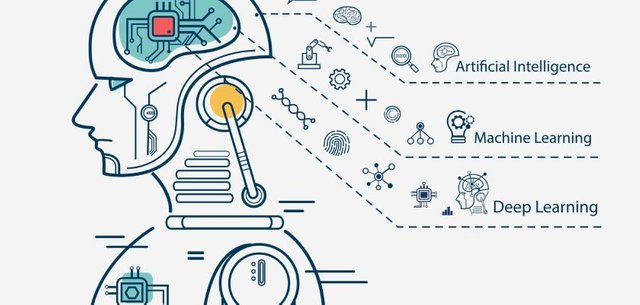Artificial Intelligence and Deep Learning
Artificial Intelligence and Deep Learning

Artificial intelligence (AI) is an interdisciplinary field that seeks to create intelligent machines that can perform tasks that typically require human intelligence, such as visual perception, speech recognition, decision-making, and language translation. Deep learning is a subset of machine learning, which is a subfield of AI that involves training algorithms to make predictions or decisions based on input data.
Deep learning algorithms are designed to learn from large amounts of data, which is why they are often used in areas such as computer vision, speech recognition, natural language processing, and robotics. In recent years, deep learning has become increasingly popular due to advances in computing power, the availability of large datasets, and the development of new deep learning architectures.
One of the most popular deep learning architectures is the convolutional neural network (CNN), which is commonly used in image and video recognition. CNNs consist of multiple layers of interconnected nodes that learn to recognize patterns in the input data. The first layer is typically responsible for detecting simple features, such as edges and corners, while subsequent layers learn to recognize more complex features, such as faces or objects.
Another popular deep learning architecture is the recurrent neural network (RNN), which is used for sequential data, such as speech or text. RNNs are designed to process data with a temporal component, such as a sequence of words in a sentence or a sequence of sounds in speech. RNNs have been used in a variety of applications, including speech recognition, machine translation, and sentiment analysis.
Generative models are another area of deep learning that has gained significant attention in recent years. Generative models are algorithms that can learn to generate new data that is similar to the training data. One popular type of generative model is the generative adversarial network (GAN), which consists of two neural networks that are trained together. One network, the generator, creates new data, while the other network, the discriminator, tries to distinguish between the generated data and the real data. The two networks are trained together in a process called adversarial training, where the generator tries to fool the discriminator, and the discriminator tries to correctly identify the real data.
In addition to deep learning, there are many other techniques and approaches that are used in AI, including rule-based systems, expert systems, decision trees, and support vector machines. Each of these approaches has its strengths and weaknesses, and the choice of technique often depends on the specific problem being addressed.
While AI has made significant progress in recent years, there are still many challenges that need to be addressed. One of the biggest challenges is the lack of transparency and interpretability of many AI algorithms. Deep learning algorithms, in particular, are often described as "black boxes" because it is difficult to understand how they arrive at their predictions or decisions. This lack of transparency can be a barrier to adoption, particularly in high-stakes applications such as healthcare or finance.
Another challenge is the need for large amounts of data to train deep learning algorithms. While large datasets are available for some applications, such as image recognition, they may not be available for other applications, such as medical diagnosis or fraud detection. In these cases, alternative approaches, such as transfer learning or active learning, may be necessary.
Despite these challenges, AI and deep learning have the potential to revolutionize many industries and have a significant impact on society. From self-driving cars to personalized medicine, the applications of AI are vast and varied. As AI continues to evolve, it is important to ensure that it is developed in a responsible and ethical manner, with a focus on transparency, accountability, and the well-being of society as a whole.
One of the key benefits of AI and deep learning is their ability to automate tasks that are traditionally performed by humans, such as data analysis, customer service, and even driving. This automation can lead to increased efficiency and productivity, as well as cost savings for businesses. However, it also raises concerns about job displacement and the need for retraining and reskilling workers in new areas.
AI and deep learning also have the potential to transform healthcare, by enabling more accurate and personalized diagnosis and treatment. For example, deep learning algorithms can be trained to analyze medical images, such as X-rays and MRIs, and identify patterns that are difficult for humans to detect. This can lead to earlier diagnosis and more effective treatment of diseases such as cancer.
Another area where AI has shown promise is in the development of autonomous systems, such as drones and robots. These systems can be used in a variety of applications, from delivery services to search and rescue operations. However, their development raises important ethical and safety concerns, such as the potential for accidents and the impact on privacy.
In order to realize the full potential of AI and deep learning, it is important to address these challenges and concerns. This requires collaboration between researchers, policymakers, and industry leaders, as well as a commitment to transparency, accountability, and ethical principles.
In conclusion, AI and deep learning are rapidly evolving fields with the potential to transform many aspects of our lives. While there are challenges and concerns that need to be addressed, the benefits of these technologies are significant, and they have the potential to create a better future for all of us...
